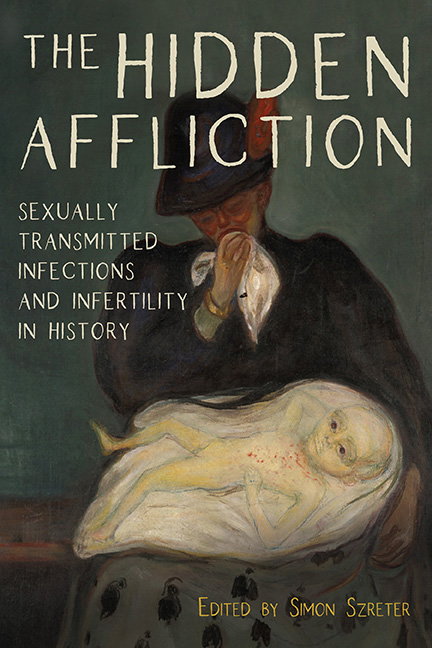Book contents
- Frontmatter
- Contents
- Acknowledgments
- Introduction
- Part One The Hidden Pitfalls in the Early Documentary Record
- Part Two The Biomedical Sciences and the History of the STI Microorganisms
- Part Three Population Decline in the Global South
- 6 Population Decline in Island Melanesia: Aphrodisian Cultural Practices, Sexually Transmitted Infections, and Low Fertility
- 7 Community Infertility in Papua New Guinea: Uncovering the Role of Gonorrhea
- 8 Fertility, STIs, and Sexual Behavior in Early and Mid-Twentieth-Century East Africa
- 9 “A Wise Provision of Nature for the Prevention of Too Many Children”: Evidence from the Australian Colonies
- Part Four Infertility and the Specter of Venereal Diseases in Modern Europe
- List of Contributors
- Index
6 - Population Decline in Island Melanesia: Aphrodisian Cultural Practices, Sexually Transmitted Infections, and Low Fertility
from Part Three - Population Decline in the Global South
Published online by Cambridge University Press: 25 March 2020
- Frontmatter
- Contents
- Acknowledgments
- Introduction
- Part One The Hidden Pitfalls in the Early Documentary Record
- Part Two The Biomedical Sciences and the History of the STI Microorganisms
- Part Three Population Decline in the Global South
- 6 Population Decline in Island Melanesia: Aphrodisian Cultural Practices, Sexually Transmitted Infections, and Low Fertility
- 7 Community Infertility in Papua New Guinea: Uncovering the Role of Gonorrhea
- 8 Fertility, STIs, and Sexual Behavior in Early and Mid-Twentieth-Century East Africa
- 9 “A Wise Provision of Nature for the Prevention of Too Many Children”: Evidence from the Australian Colonies
- Part Four Infertility and the Specter of Venereal Diseases in Modern Europe
- List of Contributors
- Index
Summary
Island Melanesia
The Melanesian islands of the Southwest Pacific (Island Melanesia) experienced the effects of European contact somewhat later than islands in Micronesia and Polynesia. There were sporadic contacts in the early nineteenth century, but most places had little sustained impact until whaling ships, traders, missionaries, and labor recruiters arrived in larger numbers after 1850. In consequence the islands of the Bismarck Archipelago (Papua New Guinea), Solomons, and New Hebrides (Vanuatu) experienced growing instability in local politics, increasingly violent interisland relations, epidemics, and a decline in population that became increasingly apparent to outside observers in the last three decades of the nineteenth century. A few islands were altogether depopulated, and most others (not all) saw a fall in numbers, but neither the magnitude of decline nor the reasons for decline were documented, and medical information is almost nonexistent. Apart from the colony of Fiji, even a basic head count of the populations did not take place in these islands until well into the twentieth century.
An exception is Simbo and Vella Lavella, two islands in the western Solomons that were visited by William H. R. Rivers and Arthur Hocart in 1908. The extensive genealogies collected by these pioneer anthropologists enabled Rivers to demonstrate the high proportion of married women living on these islands who had borne no children. Rivers himself came to favor a “psychological” explanation for childlessness, seeing colonialism as a form of trauma or shell shock that affected people's willingness to conceive, carry out abortions, or permit children to survive. The evidence he provided for these assertions was weak, and growing evidence now suggests an alternative explanation. I argue that the introduction and spread of STIs, especially gonorrhea, resulted in miscarriages, stillbirths, and sterility, and it was these effects that caused the severe decline in fertility rates. The resulting fall in population probably started before 1850 and accelerated in the 1880s and 1890s.
I also consider how far we can generalize this model across Island Melanesia, which is a region with very great cultural diversity between and even within islands. Were Simbo and Vella Lavella especially vulnerable to high levels of infection by STIs because they were “Aphrodisian cultures,” sensu Marshall Sahlins?
- Type
- Chapter
- Information
- The Hidden AfflictionSexually Transmitted Infections and Infertility in History, pp. 187 - 218Publisher: Boydell & BrewerPrint publication year: 2019



